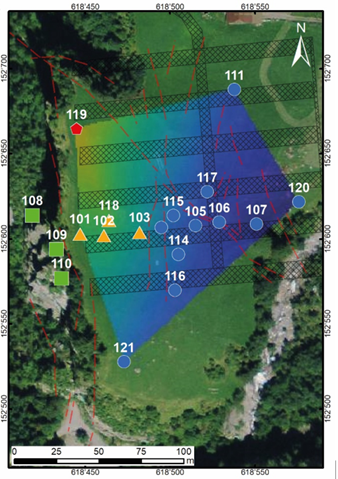Seismic monitoring of the rock instability at the former Mitholz ammunition depot
Glueer, F., Häusler, M., Gischig, V. and Fäh, D. (2021). Coseismic Stability Assessment of a Damaged Underground Ammunition Storage Chamber Through Ambient Vibration Recordings and Numerical Modelling. Front. Earth Sci. https://doi.org/10.3389/feart.2021.773155
Häusler, M., Glueer, F., & Fäh, D. (2024). The changing seismic site response of the Brienz/Brinzauls rock slope instability: insights from 5 years of monitoring before, during and after a partial collapse in June 2023. ICL open access book series “Progress in Landslide Research and Technology” 2-12.
Burjanek, J., Kleinbrod, U., & Fäh, D. (2019). Modeling the Seismic Response of Unstable Rock Mass With Deep Compliant Fractures. Journal of Geophysical Research-Solid Earth 124(12), 13039-13059. doi: 10.1029/2019jb018607
Häusler, M., Michel, C., Burjanek, J., & Fäh, D. (2019). Fracture Network Imaging on Rock Slope Instabilities Using Resonance Mode Analysis. Geophysical Research Letters 46(12), 6497-6506. doi: 10.1029/2019gl083201
Häusler, M., Gischig, V., Thöny, R., Glueer, F. and Fäh, D. (2021). Monitoring the changing seismic site response of a fast-moving rockslide (Brienz/Brinzauls, Switzerland). Geophysical Journal International 229 (1), 299-310. doi: 10.1093/gji/ggab473
Kleinbrod, U., Burjanek, J., & Fäh, D. (2019). Ambient vibration classification of unstable rock slopes: A systematic approach. Engineering Geology 249, 198-217. doi: 10.1016/j.enggeo.2018.12.012
